Q
Is myvi a reliable car?
The Myvi is a reliable car. Judging from its sales performance, the Myvi has been the best - selling car model in Malaysia from 2005 to 2014. As of now, its cumulative sales have reached 1,491,765 units. In 2024, it remains the best - selling hatchback in Malaysia and is very popular among consumers. In terms of product characteristics, it offers high cost - effectiveness. The price ranges from RM 46,500 to RM 59,900, and it comes with a rich set of features. It has low fuel consumption, being equipped with a 1.3L or 1.5L Dual VVT - i engine, and the official minimum fuel consumption is 4.5L per 100km. In terms of space, as a B - class hatchback, it has reasonable body dimensions. The rear seats can be folded down, making it highly practical. In terms of safety, the current model is equipped with advanced safety features such as Perodua Smart Drive Assist (PSDA). So, whether it's the market's recognition or its own characteristics, they all indicate that the Myvi is a reliable car.
Special Disclaimer: This content is published by users and does not represent the views or position of PCauto.
Related Q&A
Q
What mileage for MYVI spark plugs?
According to Perodua's official recommendation, the mileage for replacing the spark plugs of the Myvi is usually between 40,000 and 60,000 kilometers. The specific interval depends on the type of spark plugs used in the vehicle and the driving conditions. The original equipment generally comes with ordinary nickel - alloy spark plugs. If you upgrade to iridium or platinum spark plugs, the replacement interval can be extended to 80,000 - 100,000 kilometers.
It's worth noting that if you often experience difficulties with cold starts, unstable idling, or an abnormal increase in fuel consumption, it may be a sign of spark plug aging, and you need to have them checked in advance. The hot and humid climate in Malaysia can accelerate the wear of spark plug electrodes. It is recommended to check the condition of the spark plugs during regular maintenance. At the same time, use original or equivalent - quality accessories that meet the specifications of the Myvi engine (such as the heat range). Inferior spark plugs may lead to a decrease in ignition efficiency and even damage the ignition coil.
For the turbo - charged Myvi X version, since the engine operates at a higher temperature, it is recommended to shorten the replacement cycle by about 20% to ensure optimal performance.
Q
What is the NCAP rating of Perodua Myvi?
The Perodua Myvi has achieved a 5-star rating in the ASEAN NCAP (ASEAN New Car Assessment Programme) tests. This result showcases its excellent performance in terms of safety features. The specific test items include adult occupant protection, child occupant protection, and safety assist systems. The Myvi is equipped with multiple safety features such as dual airbags, an ABS anti - lock braking system, an EBD electronic brake - force distribution system, and a Vehicle Stability Control (VSC) system. All these features have helped it score high in the crash tests.
For Malaysian consumers, choosing a vehicle with a high NCAP rating is very important as it is directly related to the safety guarantee during daily driving. The rating criteria of ASEAN NCAP are similar to those of other NCAP organizations globally, but it pays more attention to the actual road conditions and driving habits in Southeast Asia, thus having greater regional reference value.
Apart from the Myvi, there are also other models from different brands in the Malaysian market that have achieved a 5 - star rating. When purchasing a vehicle, consumers can compare the safety features and test results of different models to ensure they select the vehicle that best suits their needs.
Q
How many spark plugs are in Myvi?
The Perodua Myvi has achieved a 5-star rating in the ASEAN NCAP (ASEAN New Car Assessment Programme) test, which showcases its excellent performance in terms of safety features. The specific test items include adult occupant protection, child occupant protection, and safety assist systems. The Myvi is equipped with multiple safety features such as dual airbags, an ABS anti-lock braking system, an EBD electronic brake-force distribution system, and a Vehicle Stability Control (VSC) system, all of which have earned it high scores in the crash tests.
For Malaysian consumers, choosing a car model with a high NCAP rating is crucial as it directly relates to the safety assurance in daily driving. The rating criteria of ASEAN NCAP are similar to those of other NCAP organizations globally, but it pays more attention to the actual road conditions and driving habits in Southeast Asia, making it more regionally relevant. Besides the Myvi, there are other car models from different brands in the Malaysian market that have also received a 5-star rating. When purchasing a car, consumers can compare the safety features and test results of different models to ensure they select the vehicle that best suits their needs.
Q
How much is myvi fuel consumption?
As one of the most popular national cars in Malaysia, the fuel economy of the Perodua Myvi varies depending on the model and driving conditions. According to official data, the fuel consumption of the latest Myvi in mixed conditions is about 5.3 to 5.6 liters per 100 kilometers (for the 1.5L engine version), which means it can travel about 18 to 19 kilometers per liter of gasoline. The 1.3L engine version may be even more fuel - efficient. The actual performance is affected by driving habits, road conditions, and the vehicle's maintenance status. For example, frequent rapid acceleration or driving in congested urban areas can significantly increase fuel consumption.
It is recommended that car owners regularly check the tire pressure, replace the air filter, and use the recommended engine oil to optimize fuel economy. Additionally, the Myvi has a fuel tank capacity of 36 liters, and theoretically, it can have a cruising range of about 600 kilometers when the tank is full.
For car owners who want to save more fuel, they can try some economical driving techniques such as smooth acceleration and anticipating road conditions to reduce sudden braking. These methods are applicable to all fuel - powered vehicles, which can not only reduce the cost of using the car but also reduce mechanical wear.
Q
How many Litres is a MYVI fuel tank?
The fuel tank capacity of the Perodua Myvi varies slightly depending on the model. The first - generation Myvi (2005 - 2011) had a fuel tank capacity of 40 liters. For the second - generation (2011 - 2017) and third - generation (2017 to present) Myvi, the fuel tank capacity increased to 36 liters for the 1.3L models and 40 liters for the 1.5L models. This design is to balance the fuel - economy requirements of different engine displacements. Malaysian car owners should note that the fuel tank capacity directly affects the driving range. Usually, a 1.5L model can travel about 500 - 600 kilometers on a full tank under combined driving conditions, which specifically depends on driving habits and road conditions. It is recommended that car owners regularly check the fuel system and maintain good driving habits to optimize fuel consumption. Meanwhile, it should be noted that the Myvi only needs to use RON95 gasoline and there's no need to use higher - grade fuel. This can not only meet the daily commuting needs but also save fuel costs.
Q
How many cylinders are in the MYVI?
As one of the most popular national cars in Malaysia, the engine configurations of the Perodua Myvi vary according to different years and versions. Currently, the mainstream models are equipped with two types of Dual VVT - i four - cylinder naturally aspirated engines, namely the 1.3L (1NR - VE) and 1.5L (2NR - VE). Therefore, all Myvi models feature a four - cylinder design. This four - cylinder layout ensures smooth power delivery while taking fuel economy into account, making it highly suitable for the urban road conditions in Malaysia.
It's worth mentioning that four - cylinder engines, due to their simple structure and low maintenance costs, are widely used in B - segment models in the local market. For example, the Proton Saga and Honda City also adopt a similar layout. The 1.5L version of the Myvi can output 102 horsepower and 136 Nm of torque. Coupled with its lightweight body design, it can offer a well - balanced performance whether driving on the congested streets of Kuala Lumpur or cruising on the highway.
For readers who want to learn about engine technology, they can note that the Dual VVT - i system used in the Myvi can intelligently adjust the valve timing. This technology shared by Toyota helps to improve fuel efficiency by about 15%. That's why the Myvi has remained one of the most fuel - efficient cars in Malaysia for years.
Q
Are Myvi and vios the same engine?
Some models of the Myvi and the Vios use the same engine. Daihatsu and Perodua have a joint - venture engine production plant in Negeri Sembilan, Malaysia, which provides power for multiple models including the Vios. Some models of the Vios and the Myvi are equipped with the 1.5L Dual VVT - i engine. This engine features high efficiency, reliability, and economy. Although its power is not extremely strong (the official 0 - 100km/h acceleration time of the Myvi 1.5 is 10.2 seconds), its low fuel consumption and durability are well - loved by consumers. However, these two cars have different positioning and market targets. Even if they share the engine platform, there are differences in vehicle tuning, configuration, and the overall driving experience.
Q
What kind of gearbox is Myvi?
The Myvi is equipped with a Dual Mode CVT (D-CVT) transmission, which is a dual-mode continuously variable transmission. Compared with traditional CVT transmissions, it has an additional gear for high-speed driving, which helps the vehicle achieve better fuel efficiency.
In daily driving, this transmission drives the vehicle in CVT mode. Thanks to the operation of the steel belt, the vehicle moves smoothly and linearly, enhancing comfort. What makes the D-CVT special is that it automatically switches to the gear mode when driving at high speeds. Different from CVT transmissions of other brands, when driving at high speeds, the engine speed of vehicles with ordinary CVT transmissions will increase, the engine noise will get louder, and the fuel consumption will rise. Moreover, the power will decline after exceeding the maximum horsepower speed. However, after the gear of the D-CVT engages, the engine speed decreases, allowing the engine to maintain a reasonable speed and providing the vehicle with continuous and abundant power.
Q
Does Myvi use CVT?
Yes, the Perodua Myvi does use CVT (Continuously Variable Transmission) technology in some models, especially the newer ones. For instance, the third-generation Myvi, launched in 2017, and its subsequent versions are equipped with D-CVT (Dual Mode Continuously Variable Transmission) to offer a smoother driving experience and better fuel efficiency. CVT technology optimizes engine performance through continuously variable gear ratios. Compared with traditional automatic transmissions, it can adapt to driving conditions more flexibly, thereby enhancing overall driving comfort. However, earlier Myvi models may have used a traditional 4-speed automatic transmission. So, whether a specific model is equipped with a CVT needs to be confirmed based on the model year and configuration. For Malaysian consumers, the advantages of CVT lie in its smoothness and fuel - saving performance during city driving, which is very suitable for the common local traffic conditions. But if you're looking for more direct power feedback, some drivers may prefer the manual transmission version. If you're considering buying a Myvi, it's recommended to check the official specifications or consult a dealer to confirm the transmission type. You can also take a test drive to see if the actual performance of the CVT meets your driving preferences.
Q
How big is Myvi fuel tank?
As one of the most popular national cars in Malaysia, the fuel tank capacity of the Perodua Myvi varies according to different generations and versions. The standard fuel tank capacity of the current third - generation Myvi (from 2017 to present) is 36 liters. It features a lightweight resin fuel tank design, which balances the fuel storage needs and the vehicle's body weight.
The fuel tank size of this B - segment model matches the fuel economy of its 1.3L/1.5L engines. It can provide a cruising range of approximately 450 - 550 kilometers under combined driving conditions, making it suitable for urban commuting and short - distance trips. It's worth noting that the actual available fuel tank capacity might be slightly less than the nominal value. This is because about 5% of the tank space is reserved for fuel expansion as a safety measure.
For owners planning long - distance drives, it is recommended to use the fuel efficiency display function on the Myvi's dashboard to monitor fuel consumption in real - time. Also, it's advisable to develop the habit of refueling when the fuel gauge shows that there is about 1/4 of the fuel left. This can prevent the fuel pump from overheating and also help deal with the situation where gas stations are far apart in some remote areas of Malaysia.
Some comparable models in the same segment, like the Proton Iriz, have a 40 - liter fuel tank. However, the actual cruising range needs to be considered in combination with the engine efficiency. Thanks to Perodua's mature powertrain tuning, the Myvi always maintains a competitive edge in terms of fuel economy.
Latest Q&A
Q
How many miles will a 2019 Santa Fe last?
The 2019 Santa Fe can typically last between 200,000 to 300,000 kilometers or more with proper maintenance—actual mileage depends on driving habits, road conditions, and service frequency. Its proven 2.4L or 2.0T engine options, paired with a 6-speed or 8-speed automatic transmission, deliver solid reliability. Staying on top of oil changes, transmission fluid, and filter replacements goes a long way in extending its lifespan.
The body structure uses high-strength steel with decent corrosion resistance, making it a good fit for our rainy climate. Still, it’s wise to get the underbody and suspension checked periodically for rust. For mixed driving conditions, a full service every 10,000 km is recommended. If you’re mostly doing short city trips, keep an eye out for carbon buildup.
Hyundai’s electronics have gotten more stable in recent years, but occasional software updates don’t hurt. Repair costs are reasonable for the segment, OEM parts are easy to find, and resale value is mid-pack. If you plan to keep it long-term, maintain complete service records—it’ll help with both performance and resale value down the road.
Q
How does the 2019 Santa Fe compare to other SUVs?
The 2019 Santa Fe strikes a solid balance in its segment, focusing on practicality and family needs. Its 2.2L diesel and 2.4L petrol engines deliver decent power and fuel efficiency, well-suited for local driving conditions. The third-row seating offers better flexibility than rivals like the Honda CR-V or Mazda CX-5, though its handling isn’t quite as sharp.
Safety-wise, it comes standard with seven airbags and Hyundai’s SmartSense suite—comparable to Toyota RAV4’s TSS system—but feels a step behind the Volkswagen Tiguan’s full-digital cockpit in tech appeal. Inside, soft-touch plastics dominate, with an 8-inch infotainment screen supporting Apple CarPlay. Space is tidier than the Kia Sorento’s, though not as sprawling.
Where it shines is value: the 5-year/unlimited-mile warranty beats most Japanese brands. Just note that resale value may lag behind them. A quick heads-up: your SUV choice should match your lifestyle. The diesel’s great for long hauls (though pricier to maintain), while hybrids suit city commutes better.
Q
What is the trade in value of a 2019 Hyundai Santa Fe?
The 2019 Hyundai Santa Fe typically holds a used car value between RM80,000 to RM120,000, depending on factors like condition, mileage, trim level, and service history. For example, the top-tier 2.4L Premium trim tends to command about RM15,000 more than the base model, while every additional 10,000 km on the odometer may drop the value by RM3,000 to RM5,000.
To get the most accurate quote, owners should check official certified pre-owned programs or professional valuation platforms. Keep in mind—full service records and genuine parts can significantly boost resale value. If you're eyeing a new car upgrade, some dealers offer trade-in bonuses, though these promotions usually tie into quarterly sales campaigns.
As a midsize SUV with strong local market presence, the Santa Fe’s reputation for reliability and affordable maintenance costs works in its favor. That said, fixing minor scratches or mechanical niggles before selling often pays off, as small investments can lead to better returns.
Q
How much does it cost to maintain a 2019 Santa Fe?
Based on the common maintenance items for the 2019 Santa Fe, a standard service—including an oil and filter change—typically runs between RM300 to RM500, depending on whether you use genuine or certified parts. At every 20,000 km, you’ll need to replace the air and cabin filters, which cost around RM200 to RM300. The major 40,000 km service involves checks and potential fluid replacements (like brake and transmission fluid), with total costs ranging from RM800 to RM1,200.
If you’re swapping all four tires for OEM-spec all-season ones, expect to pay roughly RM2,000 to RM3,000, though prices vary by brand. For hybrid models, battery inspections might add minor costs, but the battery pack itself usually comes with long-term warranty coverage.
Stick to the manual’s service schedule and keep records—it’s key for maintaining performance and resale value. Simple habits like checking tire pressure and fluid levels can also help curb long-term repair bills. Always opt for authorized service centers to ensure compliant parts and workmanship.
Q
Do 2019 Hyundai Santa Fe have transmission problems?
The 8-speed automatic transmission in the 2019 Hyundai Santa Fe delivers solid performance overall, though some owners have reported occasional mild jerking during low-speed gear changes. These cases typically stem from software calibration rather than mechanical issues, and most can be resolved with a transmission control module update at your dealership.
Hyundai's transmission tech has made significant strides in recent years—their wet dual-clutch and 8AT units now rival industry standards for smoothness. To maximize longevity, stick to the recommended maintenance schedule (transmission fluid changes every 60,000 km or as specified in your manual).
If you notice shifting irregularities, prioritize checking sensors or solenoid valves—these electronic components can be slightly more prone to issues in hot, humid climates. Early diagnosis prevents bigger headaches down the road. Worth noting: all automatic transmissions may exhibit delayed shift logic in heavy stop-and-go traffic as part of their protective programming. Using manual mode occasionally or highway driving helps keep things responsive.
For used-car shoppers, always scan for transmission trouble codes via OBD and test-drive across all speed ranges. Listen for unusual noises or slippage to rule out mechanical wear.
View MoreRelated News
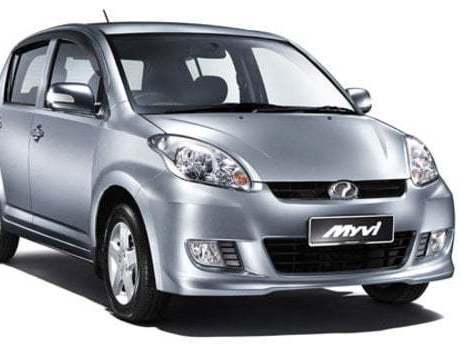
Since Its Launch in 2005, the Perodua Myvi has Cumulatively Sold Over 1,559,000 Units in 20 Years
WilliamMay 13, 2025
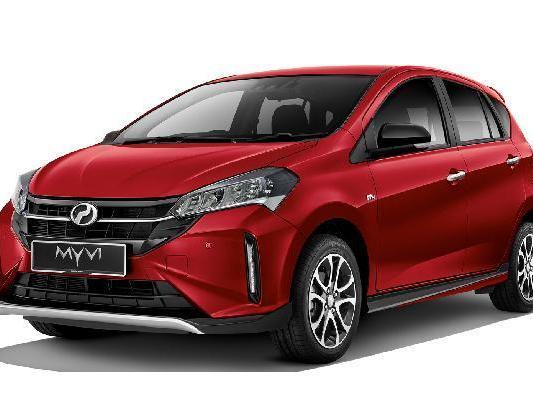
Perodua Myvi : A Value Choice for Worry-Free Car Purchases
LienMar 25, 2025

Own Perodua Myvi for less than RM 60,000: The best choice for city commuting?
LienOct 16, 2024

Perodua Axia Hits 790,000 Sales: What Makes It So Popular?
AshleyAug 12, 2025
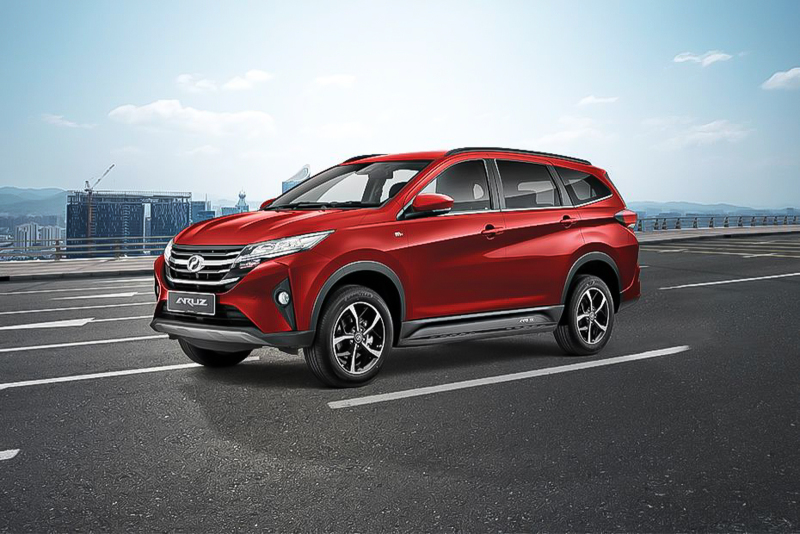
Perodua Aruz Review: A Practical and Safe SUV That Won’t Break the Bank
JamesJul 25, 2025
View More












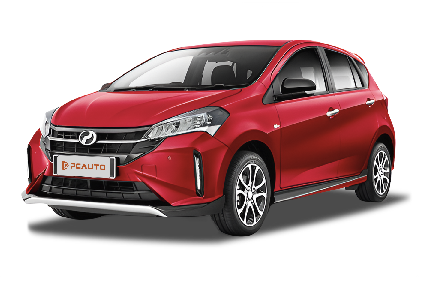
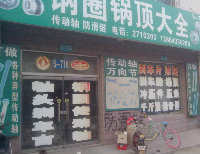
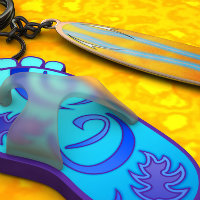



Pros
Cons